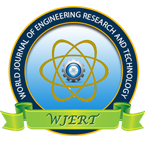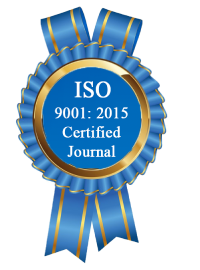| All | Since 2020 | |
| Citation | 172 | 110 |
| h-index | 7 | 5 |
| i10-index | 1 | 0 |
WJERT Citation 
Login
News & Updation
Abstract
EXPERIMENTAL STUDY ON THE USE OF RECLAIMED ASPHALT PAVEMENT AS BASE COURSE MATERIALS THROUGH BLENDING WITH CRUSHED STONE AGGREGATES
*Yomiyu Reta (MSc), Prof. Emer Tucay Quezon and Tarekegn Kumela (MSc)
ABSTRACT
Overlay and maintenance resolve medium distress, but reconstruction may feasible and economical while Asphalt pavement are badly deteriorated with time and traffic. This requires the removal of existing pavement surfaces. Recycling such construction waste has benefited from economic to sustainability point of view and reduce the exploitation of natural resources. The shortage of virgin aggregate supplies along with the increase in processing and hauling cost have encouraged the use of reclaimed material from the old structure as base course construction materials, and involved in regular practice in various countries around the world. Unfortunately, using Reclaimed asphalt pavement (RAP) is to take off in Ethiopia despite the current ambitions of road building program ongoing. However, RAP material may be not conventional road making materials and need for improvement. This study was aimed to investigation the Engineering properties effect of using RAPs and CSA in their natural state by conducting common laboratory tests in first phase, and Second phase of the study was intended to analysis the strength and interpret the optimum allowable percentage as partial replacement of CSA blended with 10/90, 20/80, 30/70, 40/60, 50/50 proportions by total weights from the two quarries site in Jimma town for RAP as compared results with specification for highly trafficked road (GB1) materials. According to the AASHTO soil classification system the natural and blends of RAP-CSA were classified under A-1-a. The mechanical and physical properties test results for neat natural blended Jimma-Sokoru with Jimma-Agaro roads RAP aggregate gives ACV, AIV, LAA, SG, CBR and Water absorption of 7.9%, 9.5%, 7.8%, 2.31, 42.1% and 0.98% respectively. Also the mechanical blending of 30% RAP aggregate and 70% CSA test results were 15.7%, 12.8%, 16.5%, 107.63%, 2.67 and 1.24% for ACV, AIV, LAA, CBR, SG, Water absorption values respectively with 143KN and 114KN when soaked and unsoaked in water for TFV results. The results obtained from Gradation, Atterberg?s limits, SG and water absorption ACV, AIV, LAA, Compaction and CBR results indicate that Mixes containing 30% RAP contents were successful replaced CSA in highly trafficked unbound road base course layer of Asphalt concretes.
[Full Text Article] [Download Certificate]
